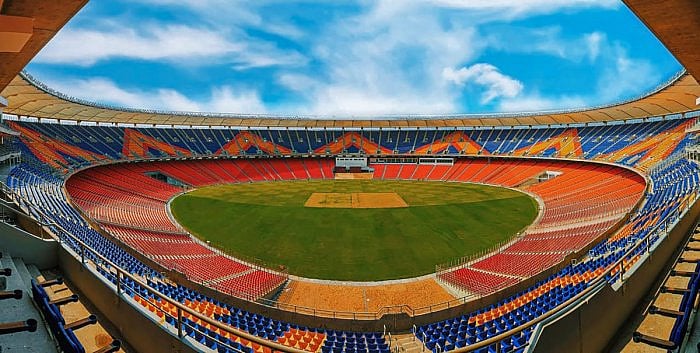
Australian cricketers aren't unfamiliar with giant stadiums and huge crowds. The imposing Melbourne Cricket Stadium houses nearly one lakh people while the opulent Optus Stadium in Perth can accommodate 60,000 spectators. Yet, many Australians, who hadn't visited the Narendra Modi Stadium before, were left stunned by its staggering size.
Come Thursday, the opening day of the fourth Test, it can be even more intimidating when an expected one lakh people turn up at what is the world's largest cricket stadium. The Gujarat State Cricket Association and the State government have left no stone unturned in their effort to make this a huge spectacle with the prime ministers of both India and Australia going to be in attendance. The two leaders are expected to meet and greet the players before taking a lap of the ground in a customised golf cart.
Both the teams have played down suggestions of a potential distraction ahead of a crucial match but they would do better to remain as immune to the pitch talk.
"Flattest day one track." That's how Australia's stand-in skipper Steve Smith described the pitch as. Smith, of course, only meant so in relative terms for the previous three pitches of the Border-Gavaskar Trophy series were anything but flat with the Indore deck even drawing a poor rating by the ICC match referee.
To say batting has been challenging on these surfaces would be an understatement. So undercooked the wickets have been in the series that they have rendered even the toss -- which is always critical in this part of the world as you get to choose to bat in the best batting conditions -- inconsequential.
Skipper Rohit Sharma admitted that he was wondering what to do if he won the toss on Thursday given the results of the three preceding Tests. Australia's regular captain Pat Cummins lost the first two Tests after winning the toss while his Indian counterpart suffered the same fate in the third.
What used to be a no-brainer (win the toss and bat first) has now become a complex matter thanks to the pitches so far. With the Indore pitch, however, turning out to be a double whammy - losing the match as well as incurring ICC sanction - Ahmedabad is likely to be less spiteful and, therefore, may provide some respite for the batsmen.
After the Indore humbling, Indian batters may have realised the need to stay positive. As Rohit pointed out after the third Test, the Indian batters weren't brave enough and allowed the Aussie spinners to dictate the course of the match.
"When the bowler is trying to bowl in one area, obviously you’ve got to try and do something different, and not allow the bowler to bowl in one spot," Rohit emphasised on Wednesday, the eve of the match. "That is a common, basic nature of cricket - not to allow someone to do one particular thing for a longer period of time. If the batter is trying to play certain kinds of shots or a certain way, you need to stop that as a bowling unit, so you will try and do something different. And it’s the same with the bowlers as well."
As for Indian spinners, they had a rare off game, especially Ravindra Jadeja, in Indore where they were comfortably outbowled by the visiting spinners. To be fair to the Indian bowlers, they didn't have too many runs to bowl at but they need to be at their absolute best as India seek to confirm their place in the World Test Championship final with a win here. With the pitch unlikely to break early, India most probably will stick to a two-pace and three-spin combo with Mohammed Shami expected to return to the playing XI in place of Mohammed Siraj.
Though there's a temptation to play Ishan Kishan in place of wicketkeeper KS Bharat, who hasn't done much with the bat, team management may just consider the difficult nature of the pitches he has batted on to give him another opportunity.
